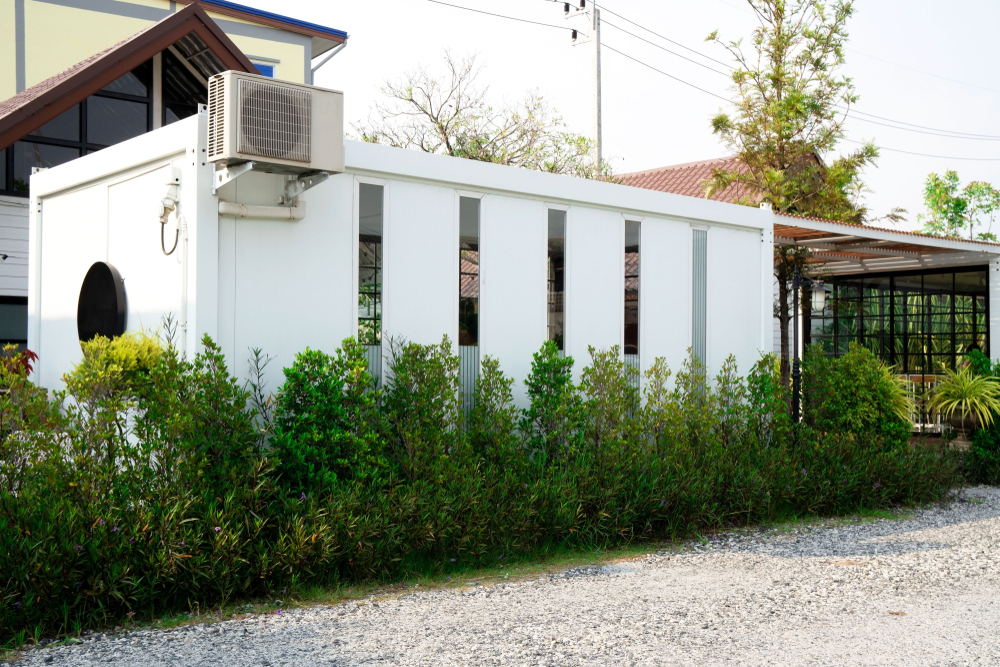10 Guidelines For Building the Perfect Shipping Container Home

Shipping containers have been growing in popularity over the last few years, because of benefits such as strength, affordability, durability and eco-friendliness. Building perfect shipping container homes may seem easy in theory, but there are things you need to consider to ensure your home is well built, beautiful and sustainable. We have prepared a list to show you very simple steps you can take, to ensure that your journey to a shipping container house is easy and stress-free.
1. Inspect the Shipping Container Before Buying It
When buying a used shipping container, you may not be able to check it, especially if it is on the other side of the world. You can however ask for pictures and a description of the shipping container. Note that older shipping containers may have rust, several dents and structural problems.
New shipping containers are expensive but might be worth the investment because they are mostly in good shape. You can also avoid the extra costs of repairing a container that is dented.
The base of your new home will most likely be this container. That's why you should pay attention to the size, material, and structural integrity before purchasing one.
2. Research Building Regulations in Your Area
Different countries or cities have different rules and regulations for constructing a shipping container home. Make sure you understand the legal information before you start the building process.
Some cities may be against building a shipping container home, while others have restrictions or regulations that must be met. To ensure that you have a good start, check your local and state building codes.
3. Find the Right Contractor
Getting a good contractor who is experienced in shipping container homes can make the construction process very smooth. They can help you to get the type of container house you want. It is advisable to also deal with one contractor rather than several smaller contractors. That way, project management is easier.
The project cost can be reduced by supervising the work directly and hiring separate contractors for tasks like welding, insulation, plumbing etc. However, coordinating several contractors is a fulltime job on its own. Working with a general contractor brings an extra cost, but it makes the project much easier for you.
4. Make Sure You Pick the Right Insulation
You need to plan for good insulation, since an unfinished steel container house will be too hot during summer and extremely cold in winter. Ask your contractors about insulation ideas, and make sure you insulate the roof and walls. If you are considering a sustainable or a greener alternative, go for sheep wool or add a green rooftop.
The most popular choice for container homes is spray foam insulation, since it also creates a vapor barrier. In addition to insulating your home, you can keep moisture outside.
The one disadvantage of spray foam insulation is having a higher price than insulation panels. Insulation panels offer similar performance to spray foam insulation, but you lose more interior space. For those who are keen on transporting the containers for their dream homes, exploring state to state container moving services is crucial. These services not only ensure the secure relocation of your containers nationwide but also offer comprehensive options suitable for different container types and sizes you plan to utilize in your construction.
5. Provide Protection Against Harmful Chemicals
If you need to buy a used shipping container, understand that they might contain heavy pesticides, which are usually applied to chase away rodents when shipping goods. The paint on these containers may also have dangerous chemicals.
To avoid these, you can either buy a new shipping container or make some adjustments. You can remove the pesticide-infested floor and install your own floor. Foam insulation will protect the interior from harmful paint emissions.
6. Avoid Cutting Your Containers
Every time you cut your shipping container for an extra door or window, you are affecting its structural integrity. The more you cut your container, the more reinforcement will be needed, increasing your budget.
7. Know the Difference between Containers
Note that shipping containers are not the same. Traditional containers are eight-feet tall, while high cube containers have an extra foot. The high cube containers are more expensive, but their extra height is useful when building your home.
8. Plan the Project Carefully
Make sure you have a good idea of where the electrical lines and plumbing pipes will be entering and leaving the home. If you have never purchased a container home before, start simple. Planning will help you and the contractor stick to the initial goal, and it also helps estimate the budget more accurately. Hiring an architect to help you design your home is the best recommendation for the planning stage.
You should plan for the wind if the container home will be located in a windy area, due to the rectangular shape. Strong winds will hit the wall of the container home, causing noise. Consider placing your container home in an area that is shielded from direct winds. Alternatively, planting trees and vegetation around your home is an effective solution, since trees are good windbreakers.
9. Avoid Excessive Welding
Shipping containers must be welded to improve their structure. The main problem is that welding can be very expensive and time-consuming. Work with your contractor to build a container home design that requires minimal welding, without compromising its structural integrity.
10. Make Sure You Have an Extra Budget for Additional Expenses
Understand that finishing the interior and exterior can add costs, even when many people are attracted to shipping container homes because they are affordable. The larger the container house, the more likely you are to incur extra expenses. The extra costs can be attributed mostly to welding, insulating and finishing. Adequate planning and budgeting can help minimize these unexpected costs.
Author Bio: Ian Mutuli is the Founder of Archute, a leading architecture information source, with the latest news, projects, products, information & resources for architects and designers.
Guest Post
New York Engineers always welcome guest posts that are relevant and informative.
Join 15,000+ Fellow Architects and Contractors
Get expert engineering tips straight to your inbox. Subscribe to the NY Engineers Blog below.


